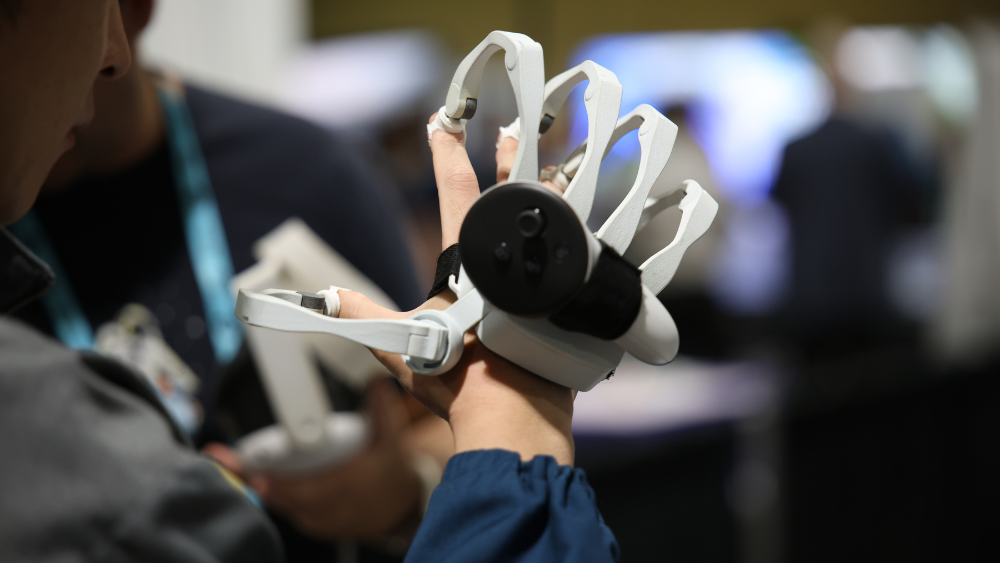Why does the XR industry need to work with governments to guide policy?
With the Metaverse seemingly an inevitable part of our future, people are beginning to question exactly how this next evolution of human connectivity will be governed. Immersive technologies such as Virtual, Augmented and Mixed Reality (VR, AR, and MR) will play a hugely significant role in the Metaverse, in whatever form it ends up taking, but the XR industry itself does not have the power to create laws that could be used to help govern this new immersive and interconnected future.
It could be argued that it is not the XR industry’s responsibility to guide policy, and that it is instead up to governments to make sure that regulations are up-to-date and in line with the latest technological trends on their own.
Of course, governments aren’t known to be the most agile of institutions, and effecting change can sometimes be likened to changing course in a tanker ship – the act of changing direction doesn’t happen immediately and progress can be very slow. In many instances, governments require the expertise of industry partners to help guide policy decisions and point things in the right direction, as governments themselves have a tendency to be slow to respond, at least at a rate that is comparable with the speed at which technology changes and evolves anyway.
What are governments currently doing for XR tech & related policy?
The US Government recently passed the new bipartisan ‘Creating Helpful Incentives to Produce Semiconductors (CHIPS) and Science Act of 2022.’The CHIPS and Science Act will help to boost American semiconductor research, development, and production, and aims to ensure U.S. leadership in a technology that forms the foundation of everything from automobiles to household appliances to defense systems. This is great news for the XR industry too, as it opens up a lot of potential funding that XR businesses may be able to benefit from.
Today, America only produces about 10 percent of the world’s supply of semiconductors, with none of these being the most advanced chips. Instead, the U.S. relies on East Asia for 75 percent of global production. The passing of the CHIPS and Science Act will therefore help to unlock hundreds of billions of dollars more in private sector semiconductor investment across the country.
Of course, the U.S. is not the first country to come up with policies surrounding immersive tech. The United Arab Emirates Government has come up with an entire Metaverse strategy that aims to turn Dubai into one of the world’s top 10 metaverse economies as well as a global hub for the metaverse community by 2030. South Korea’s Ministry of Science and ICT pledged around $186.7 million in March this year to deploy a national, enterprise-grade Metaverse ecosystem. Last year in China, a Shanghai city department released a five-year development plan that included encouraging Metaverse use in public services, business offices and other areas. The list of governments recognizing the importance of immersive technology does not stop here, and will likely continue to grow.
What does the CHIPS act mean for XR?
The CHIPS and Science Act will provide grants and subsidies worth $280 billion to the US technology and semiconductor industry, and it just so happens that “immersive technology” has been designated as a key technology focus area by the act. This means that research and development projects focused around immersive technologies (e.g. Virtual, Augmented and Mixed Reality) are eligible for a piece of this pie… or a handful of… chips.
Somebody pass us the dip
What are XR organizations doing to help guide government policy?
As mentioned, governments often require guidance from industry partners to help formulate policies. This is where organizations such as the XR Association (XRA) come in. The XRA is an organization that is helping to promote the importance of immersive technology, and has worked with the Congressional Reality Caucus—a group designed to educate US lawmakers about Virtual, Augmented and Mixed Reality technologies—to ensure that XR technology is properly recognized as a significant technology of the future.
Such lobbying efforts on behalf of the wider XR industry by organizations like the XRA are working to raise the profile of XR technology with those in power, and in the instance of the CHIPS and Science Act, these efforts can be widely regarded as a huge success for the industry.
However, it is important that the XR industry as a whole continues to work to guide policy and lawmakers.
As much as organizations like the Khronos Group or the Metaverse Standards Forum are helping to guide internal industry policy and standards (e.g. file formats, products, APIs, interoperability standards and more), government policy requires just as much guidance and collaboration, particularly for bleeding-edge technologies that are either not even on the radar of many policymakers, or widely misunderstood by those outside the industry.
In addition to advocating for immersive technology to be incorporated into the CHIPS Act, the XRA has also launched its own action center to drive supporters of the XR industry (so, most likely YOU if you are reading this post) to email their representatives about this important piece of legislation.
What lessons can the XR industry learn from previous emerging technologies?
A slow response and lack of understanding from governments can often lead to misguided policies, created by people who don’t fully understand the implications of emerging technologies. The cryptocurrency and digital asset market is a perfect example of this, with many governments initially scrambling to find the best way to oversee and manage things. At the same time, with a core philosophy of crypto being decentralization, some crypto community members were actively against government oversight of the technology, which led to a lack of interest and even resistance to engaging government organizations as key stakeholders in the wider crypto-sphere.
However, the cryptocurrency market has been rife with scams and rug pulls in recent years, with members of the crypto community only advocating for government involvement after they have in fact fallen victim to a crypto scam of some sort. This has resulted in policymakers trying their best to keep up with how quickly the crypto landscape has evolved, as they try to lessen the impact on consumers of what many still currently see as the Wild West of investing. However, this in itself can lead to an overcorrection by means of overly strict government policies that could potentially stifle the growth of an emerging technology.
Cryptocurrencies have not been without their controversies in recent years.
On the other side of the coin, there are success stories that come about in the long term through governments working to address some of the challenges posed by new and emerging technologies. Take e-commerce as an example, which started to grow rapidly in the early 90’s as a means of buying goods and services. From the beginning though, people had concerns over the safety of online shopping.
However, the development of the Secure Socket Layers (SSL) security protocol helped to address concerns by providing a safe means to transmit data over the internet and allowing web browsers to determine whether or not a site could be trusted. Then, in 1996 the United Nations Commission On International Trade Law (UNCITRAL) proposed its Model Law on Electronic Commerce (MLEC), which was designed to give a uniformity to e-commerce law around the world and later adopted by many countries.
Global e-commerce adoption can be viewed as a success story of government and industry collaboration, as today the UN reports that 81% of countries have e-transaction laws, 59% have consumer protection laws, 71% have privacy laws and 80% of countries have cybercrime laws. Online sales surpassed $4.2 trillion worldwide in 2020, and e-commerce is forecast to account for a 24.5% share of total global retail sales by 2025.
There is therefore value for the XR industry in learning from both some of the positive and negative examples from across the spectrum of various emerging technologies and their respective evolutions. It is critical that industry advocates are actively involved in assisting governments to form policy that makes sense early on. It is likely that in the future XR technology will be as ubiquitous as the internet and smartphones are today, so it is extremely important for the industry to work with lawmakers from the beginning in order to ensure that those making the laws are well-informed about the technology those laws affect.
What are the benefits of collaboration between the XR industry and governments?
Through collaboration, XR industry advocates will help to get the benefits of Virtual, Augmented and Mixed Reality on the radar of policymakers. By demonstrating the importance of XR and highlighting real world use cases and benefits of the technology, policy is more likely to assist in the XR industry’s growth, rather than hamper progress. Plus, with experts actively engaging with government representatives about the technology, it offers a prime opportunity to also debunk any potentially negative misconceptions about VR/AR/MR technology.
With lawmakers well informed and policy put into writing, it then widens the reach of the XR industry to the public at large, who otherwise may not be aware of the benefits of the technology (or that it even exists). Greater collective awareness of the benefits (and of course potential risks) of the technology, will also help to guide more well-informed discussions and decision making. Ultimately, improved awareness through greater government engagement will help to increase business opportunities for the XR sector as a whole, especially now that immersive technologies are recognized as a “key technology.”
In a similar way that the CHIPS and Science Act of 2022 was a bipartisan effort by U.S. lawmakers, the XR industry itself should also take a bipartisan approach, considering both user and technology provider needs and working together internally to help better guide external industry factors.
With input from many XR companies, experts and stakeholders from across the industry, it will mean many diverse voices can help to guide governments, with no one single entity or corporation being the sole determining factor in government decision making. And a diverse range of voices will help to result in better informed policy that fits all and is more open and inclusive to all stakeholders.
The CHIPS and Science Act is some of the earliest legislation that could directly affect XR and marks a milestone for the Virtual, Augmented and Mixed Reality industry in the U.S. Work from organizations like the XRA and their engagement with the government highlights a great first example of the importance of these sorts of partnerships between policymakers and technology experts. AWE is committed to fostering these conversations between both industry and government representatives too, and is leading the charge for issues that matter to people all around the world, for example, with our latest XR Prize Challenge to help fight climate change.
In the coming weeks, months and years, whether at our in-person AR/VR events, or online through the awe.live platform, AWE aims to be a facilitator and a hub for these important discussions as the XR industry continues to grow.
For now, here are some ways that you can get involved with the dialogue yourself:
- Visit the XR Association’s website to find out about some of the latest lobbying efforts from the organization and visit the XRA Action Center to voice your support for immersive tech funding.
- Watch the XRA’s “Behind the Scenes in Washington” webinar on August 23 on awe.live to learn more about public policy issues impacting XR.
- Come and be a part of the conversation in person at AWE Europe from October 20-21 in Lisbon, Portugal.
- Sign up to be a part of the Metaverse Standards Forum and get involved in some of the discussions from the group that are helping to guide the creation of a more inclusive metaverse.



